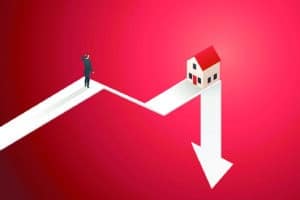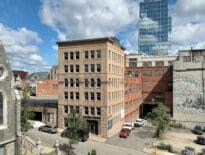
A rapid rise in both interest rates and home prices is knocking more and more buyers out of the market.
Have we reached peak home price craziness yet? It’s a question I’ve asked before in these pages, and, invariably, the answer from the market has been a resounding “no.”
It certainly seemed like already elevated prices were in for a tumble when the pandemic hit and the economy ground to a halt in the spring of 2020, and we all know how that turned out.
Instead of collapsing, the real estate market went into overdrive. Last month, the median sale price for a single-family home in Massachusetts hit $590,000, a nearly 39 percent jump from May of 2020 according to The Warren Group, publisher of Banker & Tradesman.
But as we head towards the second half of 2022, there are growing signs that the real estate market is cooling.
No, we are not in potential housing crash territory, at least at this point.
But the warning indicators on the housing market dashboard are starting to flash amid declining sales, rising interest rates, crazily inflated prices and an uncertain economy.
Sales Slowdown Hints at Trouble
One of the potentially more serious signs of forthcoming housing trouble – and one that typically gets short shrift in the local and national media – is the decline in home sales.
Bay State single-family sales are down 10 percent and condominium sales are down not quite 11 percent through the first five months of 2022, even as median prices statewide reaches new and increasingly unsustainable heights.
Here’s the thing: The last time we saw this combination of falling sales and rising prices was back in 2005 and 2006, as the air started to leak out of the real estate bubble.
Bay State single-family home sales began to edge downward in 2005, falling by roughly 6 percent from their peak in 2004, Warren Group stats show.
The slide accelerated in 2006, with sales falling by more than 16 percent.
Prices, however, took a while to catch up, with the first drop – a relatively modest 2.8 percent – accumulating by the end of 2006.
By 2008, with the Great Recession in full swing, what began as a trickle began to turn into a flood, with the statewide median single-family sale price dropping 11 percent to $305,000 year-end, with more bad times to follow in 2009.
Big Differences from 2000s Bubble
Of course, there are some big differences between what is happening now and the bursting of the real estate bubble in the late 2000s, which saw the surge in whacky, subprime mortgages morph into a tidal wave of foreclosures.
The combination of more vigilant federal regulators and wary lenders appears to have prevented, at least so far, a resurgence in this form of shady mortgage lending.
Yet this, in turn, has probably instilled some false confidence among brokers and even analysts, when, in fact, the Sword of Damocles has been hanging over the real estate market the whole time in the form of the threat, now materializing, of a major shift upwards in interest rates.
When the subprime mortgage crisis finally metastasized in the fall of 2008 and triggered an epic crash on Wall Street, the Federal Reserve responded by easing credit, through lower interest rates and other strategies, in a desperate bid to keep prices from completely collapsing.
By contrast, the current Fed, in its struggle to vanquish inflation, is taking the opposite approach: relentlessly pushing up interest rates in a bid to cool demand across the economy, including the real estate market.
Homes Few Can Afford
As mortgage rates rise, these higher borrowing costs will start to undercut home prices that fewer and fewer can afford.
Just to buy a home in a swath from Plymouth to Portsmouth, New Hampshire, where the median price of a home is $659,161, a home buyer now needs to be pulling down more than $181,000. That’s according to the annual report on the state of the nation’s housing market by Harvard University’s Joint Center for Housing Studies, which based its calculations on loan terms typical for first-time homebuyers.
An even more dire picture emerges when you zoom in on the heart of

Scott Van Voorhis
Greater Boston – basically everything from the Route 128 corridor on in, plus MetroWest – where the median price of a house hit a whopping $875,000 in May, according to the Greater Boston Association of Realtors.
Using the metrics laid out in the Harvard report, families on the hunt for their first home now need an income of $207,000 in order to afford the median priced home.
With the median family income in Massachusetts just a little over $81,000, this is not a sustainable situation.
With interest rates on the rise for the foreseeable future, housing prices are poised for a fall.
The only question is whether we see a slow decline over the next year or two, as was the case back in the mid-2000s, or a more rapid fall as the combination of suddenly much more expensive numbers with insane prices triggers a rout.
Either way, it’s going to be one very interesting ride. Buckle up!
Scott Van Voorhis is Banker & Tradesman’s columnist; opinions expressed are his own. He may be reached at sbvanvoorhis@hotmail.com.






